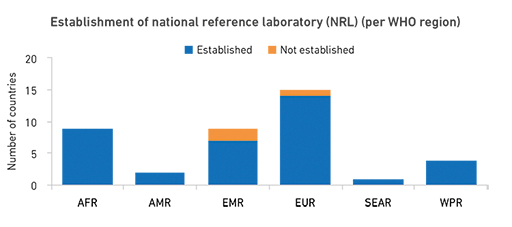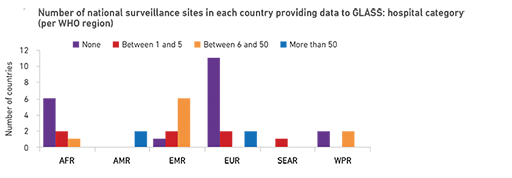7 Inadequate diagnostics and global surveillance
Antibiotic resistance is a global problem which requires a global collaborative approach to combat it. Well-equipped laboratories working in tandem with good surveillance systems can identify resistant isolates and reveal trends and outbreaks of infection. The information can then be used to inform treatment guidelines and clinical decision making, and so rationalise the use of antibiotics.
Unfortunately, the laboratory capacity and surveillance systems of many countries, particularly low-income countries (LICs), are inadequate or non-existent (Figures 10 and 11).


Many of the themes discussed this week are brought together in the final section.
